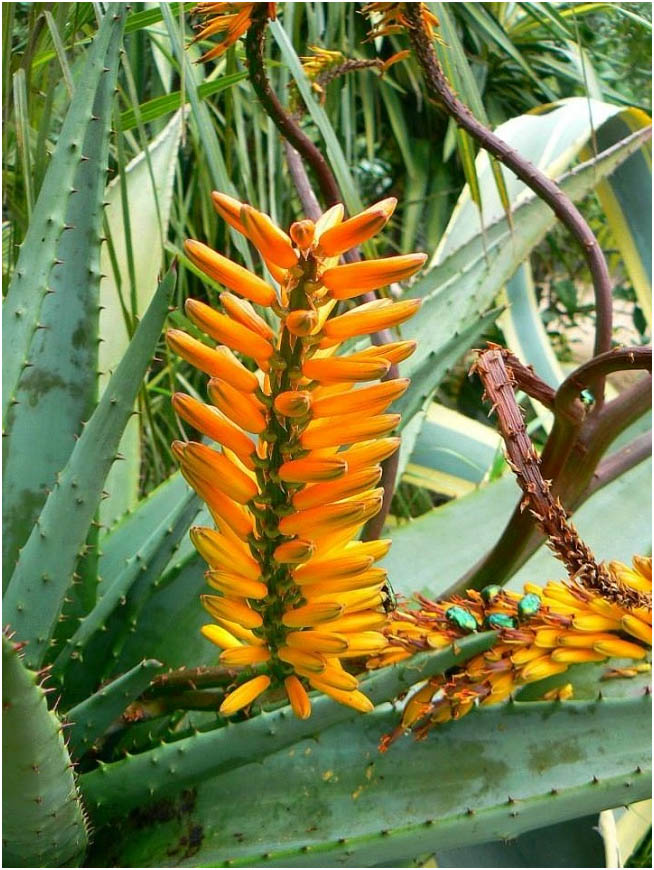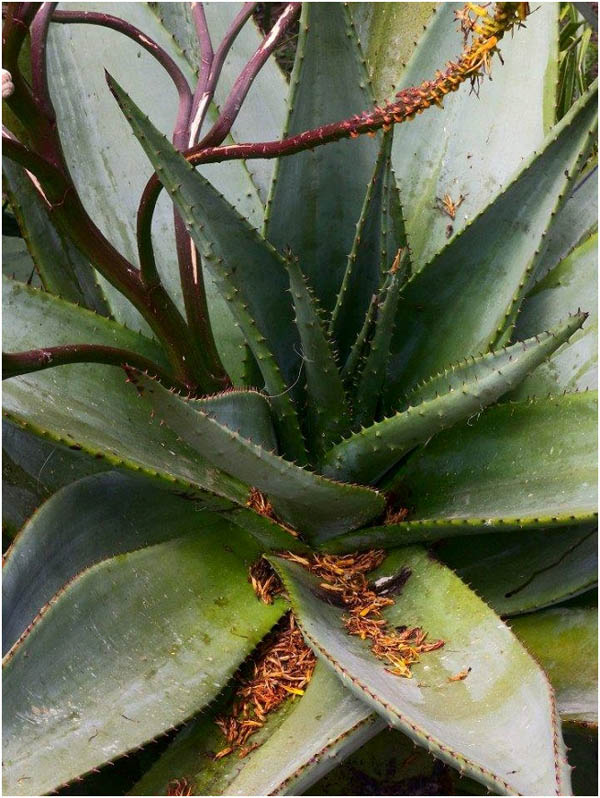This post is also available in: Croatian
BLOG BY PAUL BRADBURY
One of the biggest surprises on the Pakleni Islands is the fascinating arboretum at Meneghllo’s at Palmižana, a true treasure of exotic plant life, some from faraway lands, some much more local.
Among the amazing things one can find is an abundance of aloe, a healthy and medicinal plant. But aloe was not always on Palmizana. A fascinating account about a fascinating plant by Dagmar Meneghello:
ALOE – MOTHER NATURE’ HEART
In the days of fast foods, plasterboard houses and synthetic clothing , which of us does not long to return to a more natural way of life? No longer a back–to-nature fad but a growing phillosophy, this wish to put nature back in our lives applies above all to those two most important of human concerns: getting healthy and staying healthy.
Gardens in Dalmatia are green, especially in its warm regions as on our Island Hvar.
In spite of the cold northern wind some plants from the tropics which have successfully adapted to our circumstances are now blooming – blooming in the rhythm of their distant homeland.
One of those plants is the Aloe. This ancient medicinal plant in the world has long been utilized in medicinal and pharmaceutical production.
For over 3500 years, tales of “healing Aloe” plants have been handed down through centuries by word of mouth. From the Bible’s mention of removing Christ from the cross and wrapping his body in aloes and myrrh/John 19:39/ we find Aloe mysteriosly appearing in every phase of history, with many testimonials to its great medicinal values. The earliest documented use of Aloe comes from the ancient Egyptians, but it was also grown and used by King Solomon, who was said to have valued it highly. Cleopatra‘s secret beauty came from using the aloe plant.
Alexander the Great connquered the island of Socotra in order to have the Aloe for his army. During his fabled travels in the Orient, among the many marvels recorded by Marko Polo were his descriptions of the many applications of the Aloe plant. The Spanish Conquistadors discovered various herbal medicines in use in Tenochtitlan, Mexico. At the heart of many of the Aztec cures, it is known that Aloe was an effective agent. These Aztec herbal medicines were transported back to Europe by the Spanish during the sixteenth century, where they became the foundation for modern Western medicine.
Aloe gel is a most ingenious mixture of an antibiotic, an astrigent coagulating agent, a pain inhibitor and a growth stimulator, also called a “wood hormone” whose function is to accelerate the healing of injured surfaces. It is used for pain relief and healing of haemorrhoids, applied externally and internally. Aloe-based pharmaceutical products are used to control yeast infections.
Aloe is effective for sunburn, scratches, cuts and as a cleansing agent for the body or skin. It is an aid to growing new tissue and alleviating the advance of skin cancer caused by the sun. It is a treatment for ringworm, boils, inflamed joints, scalds, itchy allergic conditions, insect stings and bites. It creates a definite softening of the skin, relief from dry or sensitive skin and skin diseases. Dentists and oral surgeons employ Aloe Gel for surgery, swift healing, relief of pain and other oral treatments, including mouth ulcers, fever blisters, cold sores and cancers.
The Aloe is believed to improve digestion and assimilation of food eaten, so that elimination is naturally normalised. The concept is in accordance with the Chinese or Asian philosophy or medicine and goes back more than 5000 years in their history.
Not all types of aloe are useful in medicine. The most used are aloe arborescens, aloe vera, and aloe ferox.
The largest and oldest aloe garden in Croatia is in the Arboretum Meneghello in Palmižana on the island of St. Clement.
DAGHMAR MENEHGELLO
When I arrived at Palmižana nearly 50 years ago, the beautiful garden from 1906 was very rusty. The Communist State took away almost all the land. In communism other people’s labor was not allowed, or help. My husband George Toto Meneghello cared desperately for survival, that his home should not perish. With his old mother he still led a life of tourism and agriculture and animal husbandry. For the flowers there was no time.
Cacti, yuccas, palms, pines and other Mediterranean trees grow alone without human help.. . They survived and developed incredible gigantic forms. Flowers, ornamental shrubs were disappearing. The surrounding environment went wild.
I had never dealt with a garden. I was a city kid and worked as a journalist. However Palmižana looked at that time for me sad and abandoned. At night you had the feeling that the desperate and unfortunate Professor Eugen’s soul was wandering around the garden and island
At the end of the Sixties i saw in one posh villa in Hvar a few small pots of a very beautiful green plant. I asked the lady, I think her name was Herta, but that isn’t important for our story, if she could give me a piece of plant for planting. Nurseries did not exist at that time. We planted by taking pieces of the plants “pelcer” from neighbors or ” smuggled ” small plants and seeds from abroad.
She told me that she was ready to sell – “ It is an Aloe arboscenses – “ she said – and uttered such a price – at the time unthinkable – that I immediately gave up on buying. Aloes as a plant was in that time unknown for me..
My husband bought me a plant for my 25th birthday, I am 70 now.
Really I was not happy with my gift. It was questionable if the plant would grow on Palmižana? We had no time for the garden except in the winter. We did not have enough water for the guests and ourselves…
Soon we acquired Aloe vera, Aloe ferox…
Aloes are pleased with hot summers and can go without water for months, enjoying diffused light under the pines. The aloe grew and multiplied, and responded everywhere we planted it.
In the late seventies a German woman visited and told us: “ You have aloe arborescens older than 7 years, only that can me help. “ She was suffering from cancer and it was her only hope. She visited me several times a year, about one decade. and said she was kept alive only by Palmižana aloe.
Then I began to study the plant. When my close family members and friends get cancer I’m preparing them fresh preservative-free gelatin – for immunity .
Maybe we have to run cosmetics based on aloe from Palmižana. Maybe start to be a nursery garden for aloe arborescens. Here on the island there is no pollution. Until now the plant is spreading only for the beauty and decorative face of Palmižana Arboretum.
Written by: Paul Bradbury
Source: total-hvar.com
This post is also available in: Croatian




